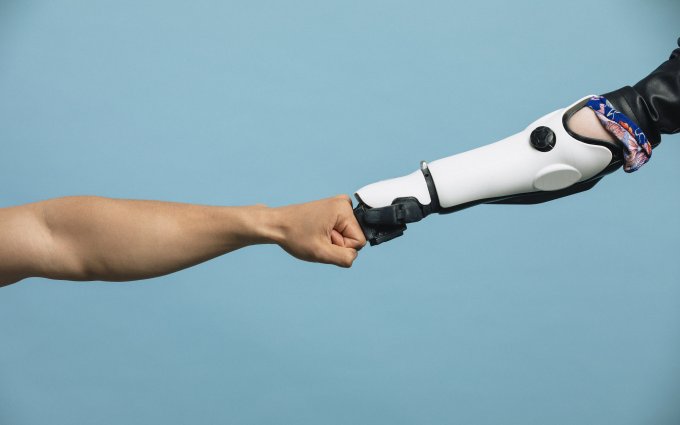12/01/2015

Upper extremity amputations can challenge even experienced claims managers. Recognizing the classification levels, functional potential, and complications can be overwhelming.
During a recent Paradigm webinar, Multidisciplinary Care of Amputations: Upper Limb Focus, the first in a two part series, a physician specializing in amputations and multiple trauma cases provided guidance to successfully identify and care for complex amputations. Gary Clark, MD, Director of Amputee Rehabilitation at the MetroHealth Rehabilitation Institute in Cleveland, Ohio, reviewed the phases of amputee care and rehabilitation, including intervention, prosthetics and assessment needs. You can view a replay of part one online and register now for part two taking place on December 8.
When Is Therapeutic Amputation Appropriate?
First, Dr. Clark focused on whether amputations can be avoided after catastrophic trauma. Thanks to significant advances in surgical techniques and wound care strategy, limb salvage surgery has recently become more successful. Amputation is not always the preferred alternative; a “bad hand” with limited function or sensation is typically still better than a “good amputation” and prosthesis.
Of course, there is often the unknown outcome and unknown timeframe to get to an endpoint of healing and actual function of the injured limb. Salvage may be feasible, but will the outcome be a healed limb in a reasonable amount of time? When there is no clear healing and improvement, it is reasonable to consider a therapeutic amputation where you have a predictable functional outcome and timeframe to achieve that outcome. This would entail the removal of a painful, infected and/or non-functional limb. About 90% of upper limb amputations involve the fingers, followed by partial hand or wrist disarticulation, transradial, elbow disarticulation, transhumeral and shoulder disarticulation.
Care Planning
Amputee rehabilitation requires an amputee clinical team involving multiple disciplines, such as the surgeon, physiatrist, occupational therapist, prosthetist, rehab psychologist, the patient and their family. There is an initial evaluation, including education, setting realistic goals, identifying a prosthetic prescription, followed by frequent follow-up, where the fit and function of the prosthesis are evaluated, and long term follow-up, which includes prosthetic modifications, maintenance and vocational needs.
Some examples of goals to achieve in amputation surgery entail preservation of functional length, durable skin and soft tissue coverage, preservation of useful sensation, facilitating early prosthetic fitting and function, and early patient return to work.
Characteristics of a Suitable Prosthesis
Several characteristics make up a successful prosthesis. First and foremost, the prosthesis must be comfortable to wear. If not comfortable, the patient will not use it. This is where the art and science of prosthetic fitting comes in, including the importance of the experience and expertise of the prosthetist. The prosthetic should also be easy to put on and remove, lightweight, durable, cosmetically pleasing, relatively easy to maintain, function as a tool, and be customized for a patient’s specific needs.
Dr. Clark also discussed whether one should consider a body powered or myoelectric prosthesis. He reviews the pros and cons of each and compares durability, training, maintenance and cost.
The Road to Recovery
Psychological issues are key in upper limb amputations and must be monitored and addressed. Amputees often go through a mourning process, confront issues of body image and disfigurement, experience depression and gradually adjust to the disability over time.
The ability to return to work is a significant concern and is affected by multiple influences. Predictable factors include length of premorbid employment, the type of premorbid work, stable medical status, functional independence, and job coaching and training. Overall, it has been shown that about a third of injured workers will change their occupation—primarily those who worked in manual labor.
Webinar Series
For a more detailed review of upper limb amputations, please listen to a replay of our September webinar, Multidisciplinary Care of Amputations: Upper Limb Focus (Part 1).
Part two of this webinar series will focus on lower limb amputations and takes place next week, December 8. Register online today!